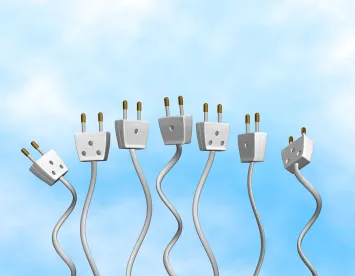In the wake of two recent D.C. Circuit decisions, the Federal Energy Regulatory Commission (FERC) has begun to implement its new policy concerning the review of natural gas pipeline construction proposals under the National Environmental Policy Act (NEPA). To decide whether a NEPA review must include other projects proposed by the pipeline, FERC will look at the timing and maturity of other proposals and the independence of the projects.
In the first decision, Delaware Riverkeeper Network, the U.S. Court of Appeals for the D.C. Circuit held that FERC failed to consider the cumulative environmental impact of four projects that had been separately proposed by the same pipeline. The D.C. Circuit held that the projects were not financially independent and were “a single pipeline” that was “linear and physically interdependent,” so the cumulative environmental impacts must be considered concurrently.
In the second decision, Minisink Residents for Environmental Preservation and Safety, the D.C. Circuit held that FERC had properly considered and rejected an alternative site to build a natural gas pipeline compressor station. Contrasting the decision to Delaware Riverkeeper, the court clarified that the “critical” factor in the previous decision was that all of the pipeline’s projects were either under construction or pending before FERC for environmental review at the same time.
In several recent orders, FERC has implemented the D.C. Circuit’s guidance in addressing claims of improper segmentation. For example, FERC recently authorized Transcontinental Gas Pipe Line Company (Transco) to construct and operate the Leidy Southeast Project. The Leidy Southeast Project will include nearly 30 miles of new pipeline loop and four compressor stations to provide capacity from supply areas in Pennsylvania to various receipt points as far south as Choctaw County, Alabama. Opponents of the pipeline project (coincidentally Delaware Riverkeeper Network) claimed that FERC should have also considered in its NEPA review three other Transco projects—one already constructed and two proposed projects.
FERC rejected opponents’ request to conduct a joint NEPA review. FERC emphasized that (1) the first Transco project was approved nearly a year before Transco proposed the Leidy Southeast Project; (2) the other two Transco projects “were not fully defined ‘proposals’ at any time during the period that the Leidy Southeast Project was receiving consideration;” and (3) the Leidy Southeast Project was not “connected” to the other Transco projects, as it did not “rely on” other projects for its operation and “would have been built even if” the first project had not been constructed.



 />i
/>i
